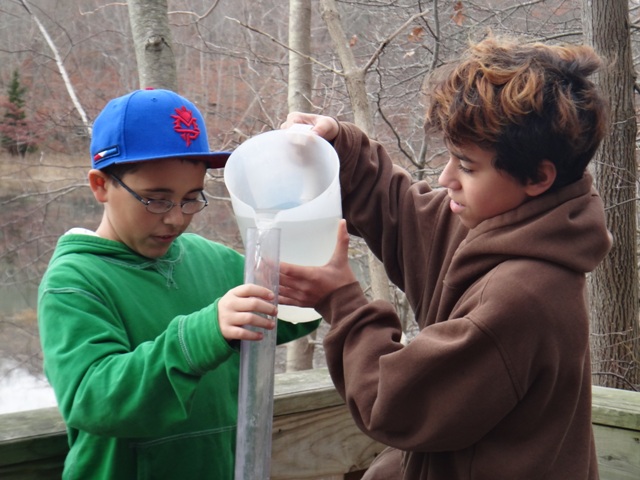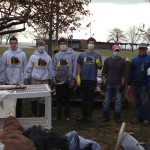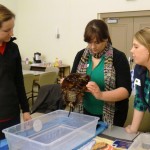December 2012: SoundWaters brings coastal education to Eastern Long Island Sound
SoundWaters educators took our acclaimed coastal education program eastward, bringing marine science experiments and live animals to every seventh grader from Old Saybrook Middle School. Over two days, a total of 60 students convened at the Stewart B. McKinney National Wildlife Refuge in Westbrook to conduct field research about their local watershed.
The refuge sits on a salt marsh beside a tributary along the Manunketsuck River, a Native American word for Long Island Sound, meaning broad, flowing river. With its brackish water at the coast and upland forest habitats, the site was perfect for the students to sample and measure water quality, investigate soil filtration, examine impacts of marine debris and compare adaptations of marine animals.
The field studies draw on science, technology and math skills, as well as observation, analysis and problem-solving. During one experiment, for example, the students simulated an oil spill clean-up to determine absorption rates using different materials.
SoundWaters educators planned meticulously for the “road trip” to Westbrook, packing a van to transport everything needed to conduct the program: scientific equipment; marine animals including terrapins, sea stars, hermit crab, horseshoe crab, spider crab, oyster toad fish and flounder; and even samples of brackish water from the western Sound for comparison.
The students also met with staff from the National Wildlife Refuge to learn about the purpose of the refuge and the importance of its work, ranging from restoring grassland and marshes to creating artificial nesting structures for terns, bluebirds, and black ducks.
By getting outside, and engaged in hands-on activities, the students interacted with their local environment to see first-hand the connections between habitats, marine animals and the impact of human actions.




